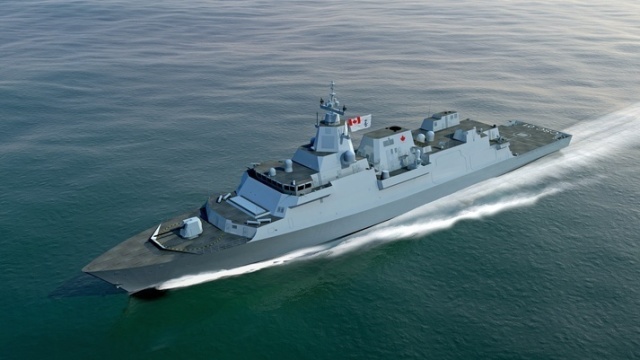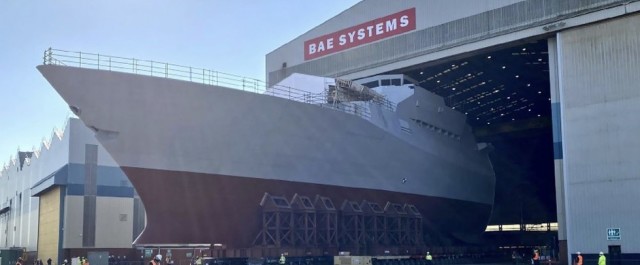The British continue to build the lead frigate of the latest Type 26 project. Yesterday, April 16, at the shipbuilding enterprise of the BAE Systems Maritime — Naval Ships division of BAE Systems Corporation in Glasgow (former Yarrow shipyard), the bow section of the frigate HMS Glasgow was withdrawn from the boathouse.
The Type 26 frigates, also known as Global Combat Ships (GCS), are designed by BAE Systems for the British Navy. Initially, it was planned to purchase thirteen new frigates for the Royal Navy, but due to disagreements in the cost of their production started with a two-year delay from the plan, and the number of ships was reduced to eight units.

Visualization of the Type 26 project frigate
Image source: navaltoday.com
In addition to Glasgow, the British Navy will replenish the ships Cardiff, Belfast, Edinburgh, Birmingham, Sheffield, Newcastle and London. In addition, the Type 26 frigates will be built for Australia and Canada.
Withdrawal from the boathouse of the forward section of the frigate HMS Glasgow
The design length of each of the Type 26 frigates is almost 150 m, with a displacement of 6,900 tons. The ships will be able to reach speeds of up to 26 knots (48 km/h) and travel up to 7,000 miles (13,000 km) without refueling. The crew of each frigate will consist of 108 people, while the ship can accommodate up to 208 people.
Each Type 26 frigate must be equipped with a 48-charge vertical launcher of the new MBDA Sea Captor short-and medium-range air defense system, a 24-charge Mk 41 universal vertical launcher for Tomahawk cruise missiles, LRASM anti-ship missiles and VL-ASROC anti-submarine missiles, as well as a 127-mm Mk 45 Mod 4 universal artillery system, two 20-mm Mk 15 anti-aircraft artillery systems and two 30-mm DS30M Mk 2 artillery systems. One heavy Merlin helicopter or two medium Wildcat helicopters, as well as unmanned aerial vehicles, must be permanently stationed on the ship.

